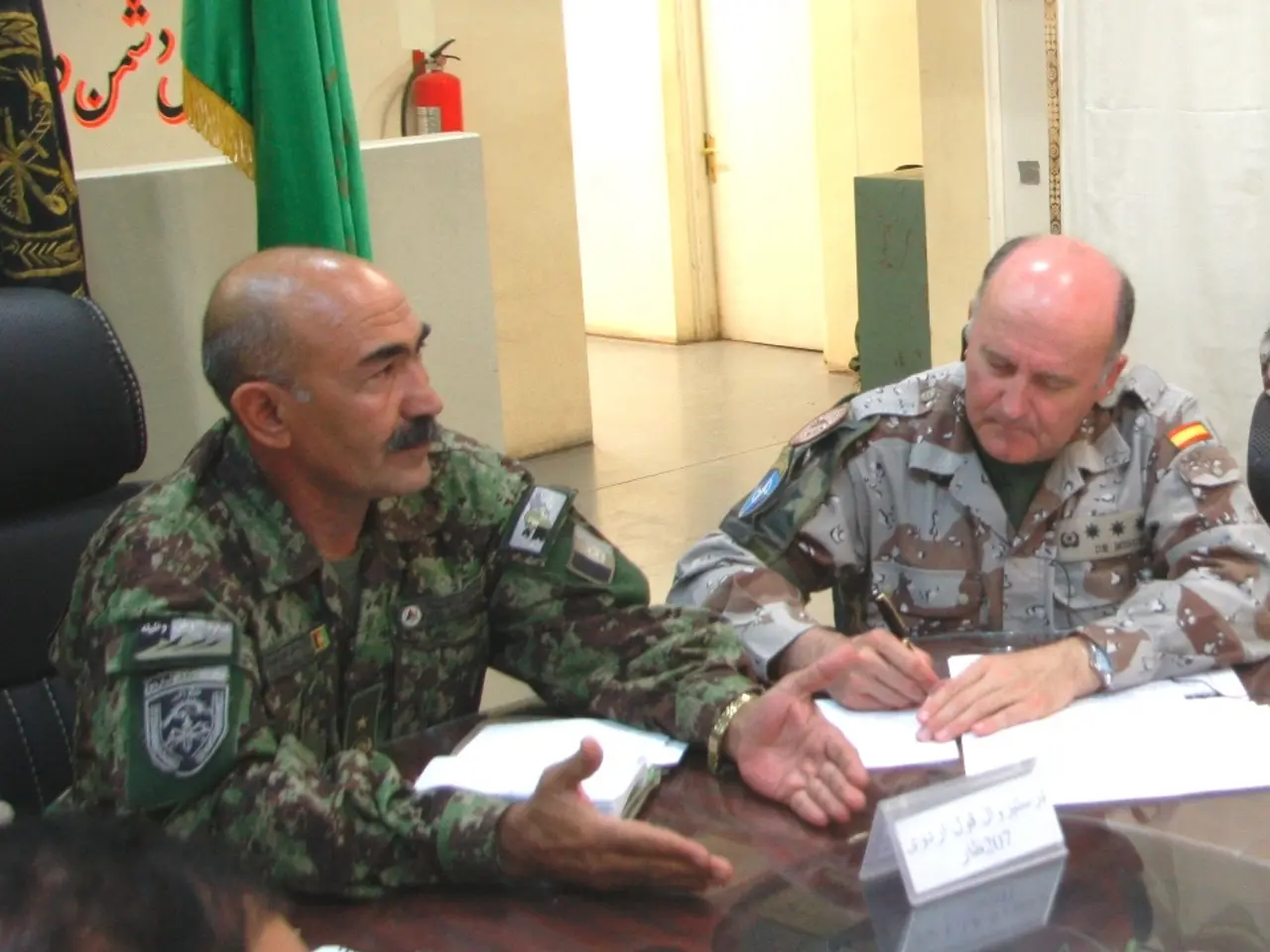Escalating Tensions in Washington: A Comparison Between Trump's Present Stance and the National Guard's Deployment in 1968
The 1968 Washington, D.C. riots were a pivotal event in the city's history, directly linked to the assassination of Martin Luther King Jr. on April 4, 1968. The riots, which lasted from April 4 to 8, were part of a larger wave of unrest across over 100 U.S. cities, deeply rooted in longstanding racial and economic inequalities.
Causes
The immediate trigger was King's assassination, which shocked and enraged the African American community and others sympathetic to civil rights. King’s death symbolized the loss of a prominent, nonviolent civil rights advocate, leading some to believe that violent resistance was a necessary response to racial oppression.
Underlying causes included systemic racial inequalities, poverty, unemployment, discrimination, and prior tensions in minority neighborhoods. Local grievances were pronounced; for example, ongoing labor struggles like the Memphis sanitation strike gained urgency after King’s killing, illustrating how socio-economic factors fueled unrest.
Consequences
The riots resulted in at least 12 deaths and over 1,000 injuries, with widespread looting, arson, and destruction of more than 900 businesses, primarily white-owned. Law enforcement and the overwhelmed local police were unable to control the situation, prompting President Johnson to deploy approximately 13,600 federal troops, including Marines and Army units, under the Insurrection Act to restore order.
The riots left significant economic damage and further fractured community relations. While many black middle-class residents participated, the destruction disproportionately affected black neighborhoods economically. The events exposed the fragile state of race relations and urban governance in the U.S.
Comparisons with Recent Events
In 2020, the National Guard was once again mobilized in Washington, D.C., during Black Lives Matter protests. There was a dispute over whether they were specifically clearing a path for President Trump's photo opportunity or just moving protesters away from the White House.
This year, President Trump has posted guard members on the streets of cities, including Washington, D.C., and Los Angeles, without local leaders' explicit request. Some arrests have been made, but the situation in Washington is not as chaotic as Trump described when announcing the federal law enforcement takeover.
The Aftermath
After the violence was brought under control, President Johnson toured the damage from the air, according to Secret Service agent Clint Hill. The Shaw neighborhood, which was left in ruins after the 1968 uprising, is now billed as filled with "cool local shops, foodie restaurants, concert halls, and African American history." Row houses in what were once considered dangerous streets now sell for more than a million dollars.
The biggest military callup in Washington since the Civil War was during the 1968 riots following the assassination of civil rights leader Martin Luther King, Jr. However, violent crime in Washington has been on the decline after spiking in 2023, according to Metropolitan Police Department records.
The 1968 Washington, D.C. riots serve as a stark reminder of the city's tumultuous past and the ongoing struggle for racial equality and justice. The events of 1968 and recent years demonstrate the need for continued dialogue, understanding, and action to address systemic inequalities and promote peace and unity.
[1] The New York Times. (1968). Riots in 68 Cities; 34 Dead, 2,000 Injured. https://www.nytimes.com/1968/04/06/archives/riots-in-68-cities-34-dead-2000-injured.html [2] The Washington Post. (1968). President Johnson Orders 13,600 Troops to D.C. for Control. https://www.washingtonpost.com/archive/politics/1968/04/06/president-johnson-orders-13600-troops-to-dc-for-control/a568424e-737a-4443-9a8e-e30a84927a16/ [4] The Washington Post. (1968). The Memphis Strike and the Assassination of Martin Luther King Jr. https://www.washingtonpost.com/history/2018/04/04/the-memphis-strike-and-assassination-martin-luther-king-jr/ [5] National Archives and Records Administration. (2018). 1968 Riots: A Time of Unrest. https://www.archives.gov/education/lessons/1968-riots
- In today's politics, debates on us war-and-conflicts, general-news, crime-and-justice, and sports are common, yet the events leading to the 1968 Washington, D.C. riots serve as a potent reminder of the power of such issues to ignite social unrest, as seen in the societal fracture caused by the assassination of Martin Luther King Jr.
- The riots resulted in a significant aftermath that impacted various aspects of society, such as urban development and real estate prices, with the Shaw neighborhood, once devastated by the 1968 uprising, now thriving as a hub for cool local shops, foodie restaurants, concert halls, and African American history, with row houses previously considered dangerous streets now selling for more than a million dollars.
- Just as the 1968 riots highlighted the need for improved race relations and urban governance, current events, including the mobilization of the National Guard during Black Lives Matter protests and in cities like Washington, D.C., and Los Angeles under President Trump's administration, underscore the continued necessity for dialogue, understanding, and action to address systemic inequalities and foster peace and unity.








